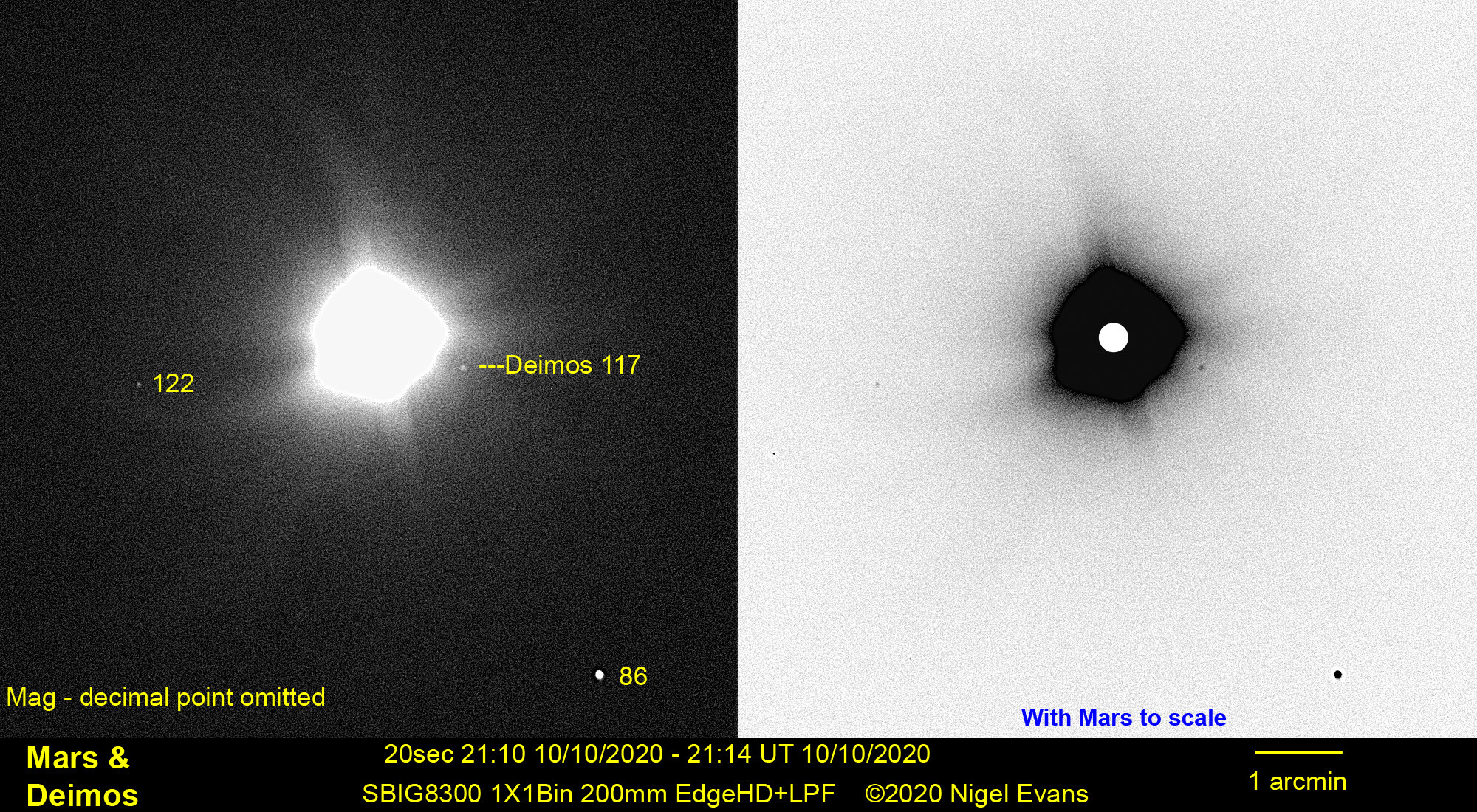
Orwell Astronomical Society (Ipswich)
Deimos, 10 & 26 October 2020
The two moons of Mars, Phobos and Deimos, are small, irregular objects orbiting close to the planet. This makes them difficult to observe due to glare from the parent body. The following table provides key physical, orbital and observational data for the moons.
| Phobos | Deimos | |
| Diameter (km) | 27x22x18 | 15x12x11 |
| Mass (kg) | 1.1x1016 | 2x1015 |
| Orbital Period (hours) | 7.66 | 30.35 |
| Orbital semi-major axis (km) | 9,378 | 23,460 |
| Magnitude | 11.3 | 12.4 |
| Max. Elongation at Mean Opp. (' ") | 0 25 | 1 02 |
In late 2020, Mars is at a favourable opposition and, on 10 October, I attempted to observe the moons. The camera I used, an SBIG8300, is better suited to recording faint objects in the deep sky than to imaging a faint object close to another object 10 magnitudes brighter. I normally run the camera in 2x2 binning mode, but I tried it out with no binning (1x1) as well. I was able to capture Deimos, with little apparent difference between 1x1 and 2x2 binning. Unfortunately, Phobos was lost in the glare of Mars, some 20 arcseconds distant.
On 26 October, I tried again to record Phobos. I used a Baader solar eclipse filter, stuck to the cover glass of a camera, as an occulting bar, to reduce the glare from Mars. The planet moved relative to the background stars at approximately 1 arcsecond per minute, too fast for an autoguider set on the stars, and was far too bright for an autoguider to track directly. So I took all exposures unguided but, at only 1 s duration, that was not a major problem. I used the slow/fast buttons on the telescope to keep Mars hidden behind the occulting bar, and hoped to record Phobos as it came to greatest elongation.
The occulting bar produced some odd reflection effects that masked the presence of Phobos and, as a result, unfortunately, I did not record the moon. However, I did record many images of Deimos, all of the same exposure but unevenly spaced in time. I have assembled them into an asynchronous movie, below. This is first aligned on the stars, showing the motion of Mars, then is aligned on Mars showing both its motion against the stars and the motion of Deimos around the planet. Finally, a few images stacked at the end of the video show the relative motions of the bodies. (In the video, Deimos emerges from the shadow of the planet at approximately seven and 18 seconds.)
Nigel Evans